I worked on making a porcelain fuse block for the knob and tube system. This is for the service entrance. I used polymer clay (Sculpey in Pearl) since it was easiest to mold and shape and would look enough like porcelain to pass.
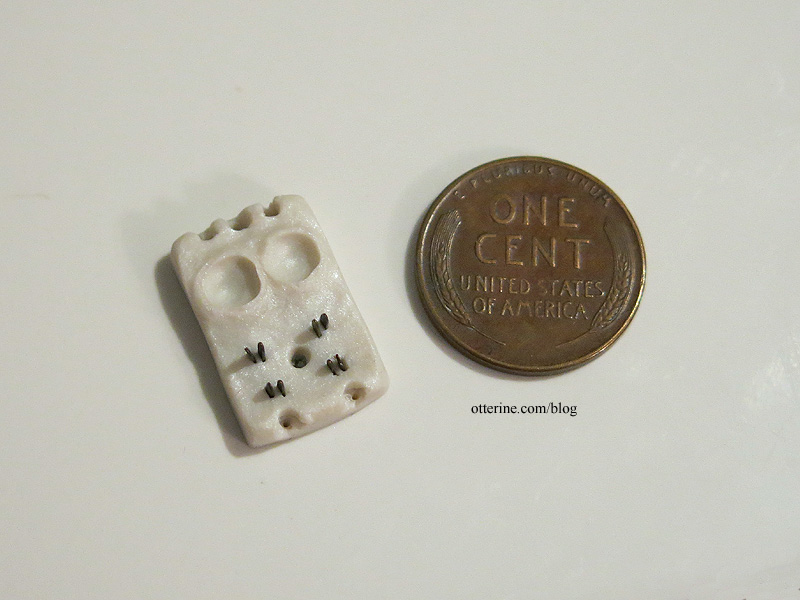
I used jewelry findings for the connectors. The measurements for the real deal are roughly 3″ x 6″ from the few I saw listed for sale. Mine is a little large for scale at 1/2″ x 3/4″, but it’s all relative in the barn and it shouldn’t make a difference for realism. I didn’t think I could successfully work any smaller. :D

I finished the porcelain fuse block by adding the knife switch and two fuses. The fuses are made from brass and silver watch parts (painted) and two clear plastic discs. The switch doesn’t pivot; it’s glued in place. I mixed some brown paint with Americana Staining Medium to age the assembly.
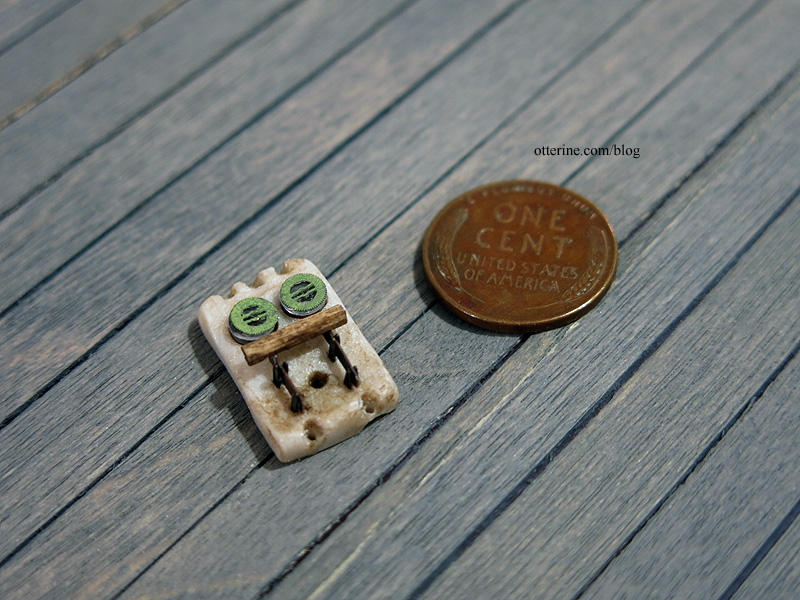
I drilled holes through the wall to insert tubes to the exterior. I’ll address the exterior electrical portion later. My original attempt at mimicking the shaped end of the porcelain tube was done with contour putty.
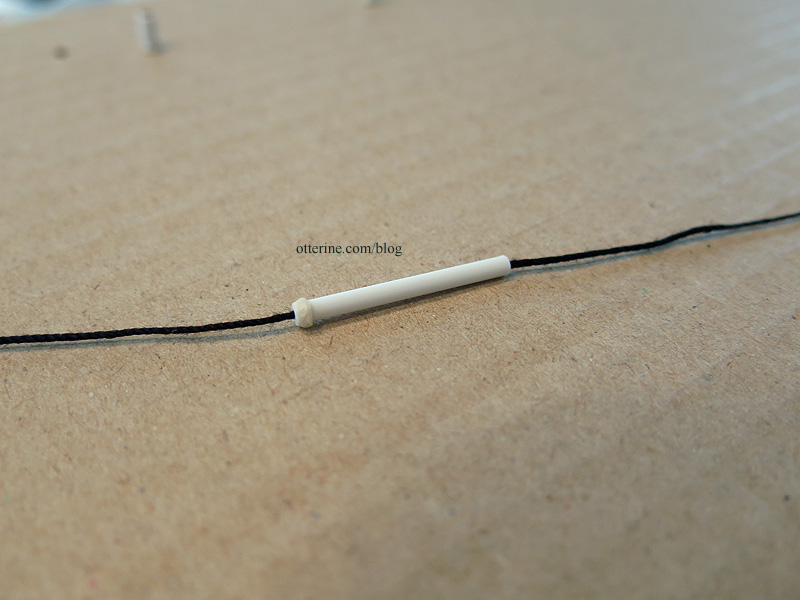
It was too brittle and fell to pieces, so I cut the tubes and pressed one end onto an awl to stretch it a bit. This allows for a slight shape even if it’s not an exact replica.

I glued the box to the wall and then added two brass nails clipped short to fit. The bottom screw holes disintegrated when I drilled the larger holes, but you won’t see this once the final cording is in place.
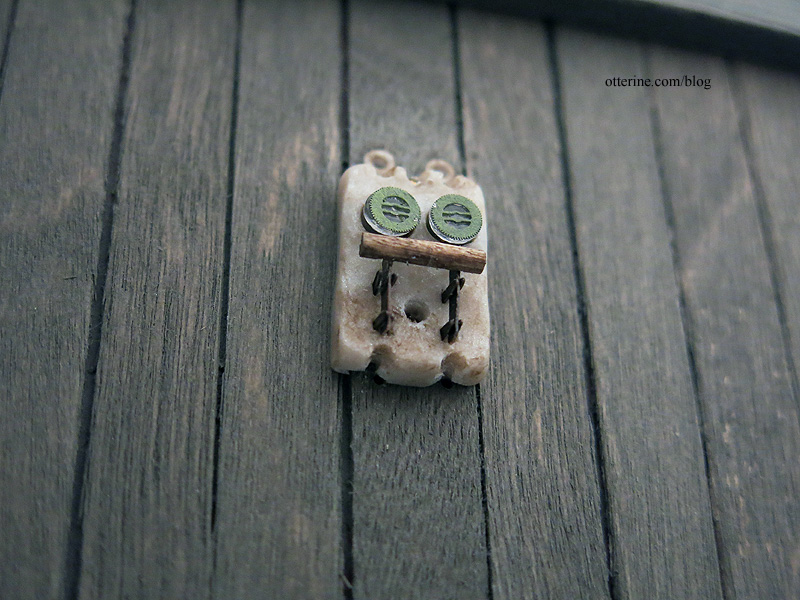
I chose to mount the fuse block higher than I had it in initial map. From what I’ve read, it was difficult not to shock yourself (i.e., electrocute yourself) when throwing the switch. I figured it would be best to keep it in a place where nothing would lean on it by accident, something like a metal rake.
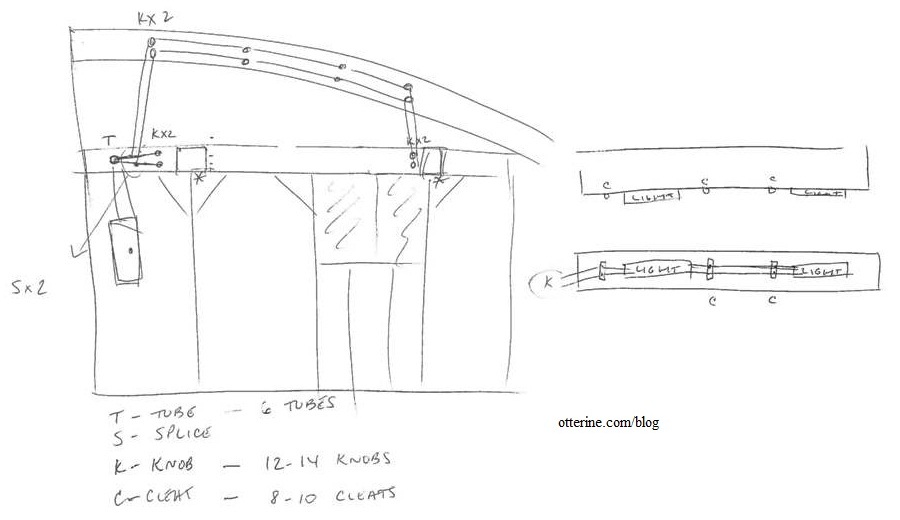
I’m now ready to finish up the cording through the remaining knobs and tubes.






































